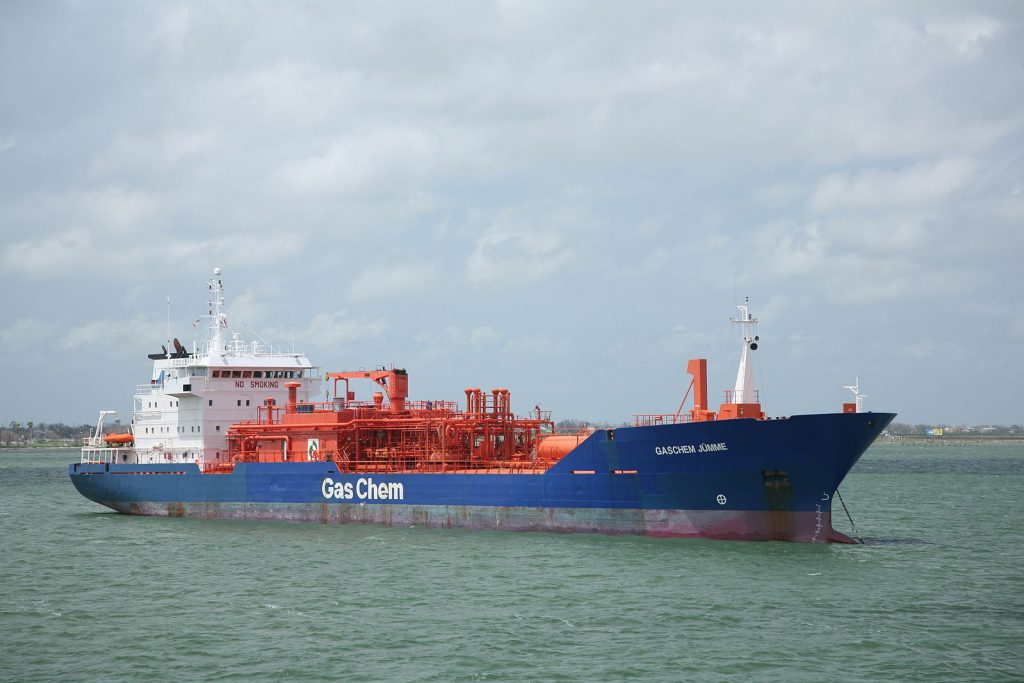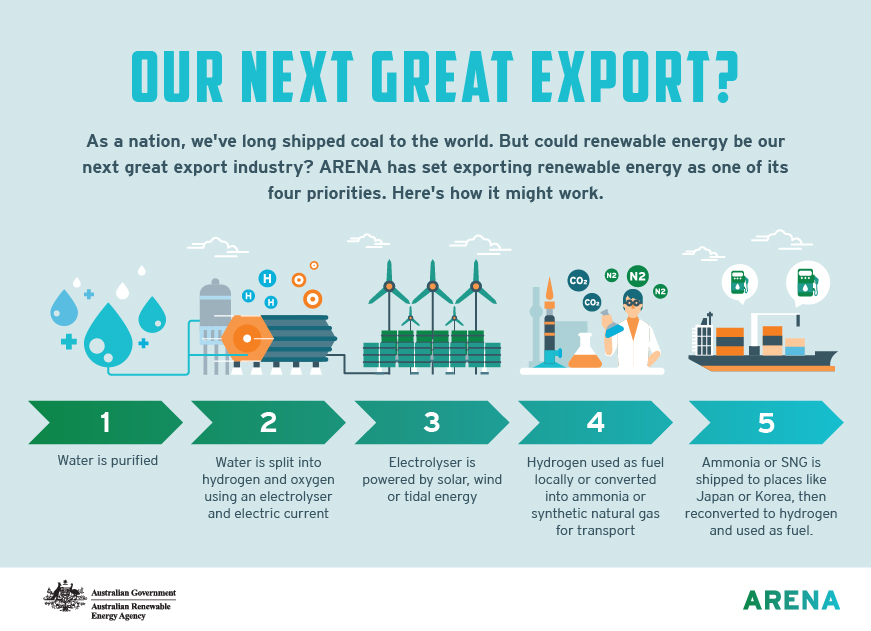Can we export renewable energy?
Australia has been an energy-exporting superpower for decades, shipping massive quantities of coal and, more recently, gas around the world. It’s what we do. But as Australia faces the challenge to move away from fossil fuels, do we also have to give up our energy export status?

Not necessarily.
Here is an exciting thought: Australia has the potential to be one of the largest generators and exporters of renewable energy in the world. We could be a renewable energy superpower.
Our capacity to generate wind, solar, wave and tide power is huge: Beyond Zero Emissions has estimated that Australia’s “economically demonstrated solar and wind energy resources are … over 5000 exajoules.”
That’s 75 per cent greater than Australia’s coal, gas, oil and uranium resources combined.
And it’s likely to be in demand. There is already great interest elsewhere in the world in imported renewable power, particularly in countries such as Japan and South Korea that have high energy use, high population density and low potential for generation.
In Japan, the move away from nuclear after the Fukushima disaster, combined with pressure not to shift that burden entirely to fossil fuels, has created an economy that could be a significant importer of exported Australian renewables. Our existing trading relationship with Japan would likely assist with building a new industry.

Download the ‘Our Next Great Export’ infographic (PDF 655KB)
Mostly, it all depends on one simple molecule.
“Hydrogen is the energy of the future,” according to Japanese Prime Minister Shinzo Abe, who believes there could be a market of one trillion yen annually from the hydrogen economy by 2030.
If this all sounds exciting it’s a reaction ARENA shares. The agency has signalled its strong interest in investigating a renewables export industry by making it one of ARENA’s priorities, newly established to guide future funding investments.
A strong export industry would have the benefit of underwriting renewables production for domestic use which, if managed well, could bring costs down for local consumers. Oliver Yates, the former CEO of the Clean Energy Finance Corporation, has talked about the hundreds of gigawatts of potential generation in Australia that could be realised if we had an export industry.
This isn’t science fiction. Australia is well placed to capitalise on a future export hydrogen market.
How can we export hydrogen?
Exporting renewable energy via hydrogen could potentially fill the niche currently held by LNG but there are challenges associated with this. Hydrogen is not very dense and so needs to be shipped and stored at very high pressures (more on that later).
Hydrogen would be produced by purifying water, then separating the hydrogen and oxygen in the water via electrolysis (applying an electric current). For the energy being exported to be renewable, the process of separation would most likely be powered by solar or wind energy, or by emerging options such as tidal energy.
The hydrogen acts as a vehicle for storing that energy. It could be used locally, particularly to power vehicles or via fuel cells that can provide stationary electricity in off-grid locations. But for export it needs to be converted into transportable forms, with ammonia looking the most promising.
Hydrogen is already used to make ammonia, which is an important ingredient of industrial fertiliser and is one of the world’s most commonly-traded chemical commodities. Making that hydrogen with renewables would significantly reduce the emissions in that existing supply chain. But as well as being an end product, ammonia can be a transport material for hydrogen. Ammonia can carry a much higher hydrogen density than liquid hydrogen can. It’s the most likely way Australian renewable energy would be shipped for export.
Another possibility for exporting renewables might be synthetic natural gas, which could be produced by gasification of agricultural residues – effectively waste products from farming, forestry or other industries – and conversion of this into methane.
We’re not there yet
The problem is separating the hydrogen from the ammonia at its destination so the hydrogen can be used for power, but CSIRO has already made significant advances in this field. Existing port infrastructure, such as that used for LNG export, could be repurposed to handle future ammonia exports.
The costs of both renewable generation and electrolysis are falling and there is proven demand for imported hydrogen, particularly in South Korea and Japan. The South Korean government has announced it is aiming for 9,000 hydrogen cars on its roads by 2020, and as many as 630,000 by 2030. The target for refuelling stations is 520 by 2030.

Japan’s Strategic Energy Plan is even more comprehensive. There are already plans for cars and a refuelling network, and for hydrogen ships, forklifts and garbage trucks. But there are also ambitions for hydrogen fuel cells in homes, and for hydrogen to be used in power plant generation and industrial processes as a feedstock for production of chemicals, electronics, glass and metals.
Japan began its hydrogen push with a focus on fossil fuels for production, but the country wants its hydrogen to be 100 per cent renewable-produced by 2040. The 2020 Tokyo Olympics is intended to showcase Japan’s shift to hydrogen from nuclear. Japan’s scientists are working on low-cost electrolysis and on methods to synthesise ammonia from hydrogen at room temperature and room pressure, reducing the energy required.
While Japan and South Korea are most likely to be markets for Australian export hydrogen, there are other overseas developments that could help boost a future Australian industry. Germany, for example, is looking to expand its renewables generation, using hydrogen for storage. Its research into more efficient electrolysis could produce new methodologies and significantly reduce costs.
Other options for export
While replacements for fossil fuel-generated stationary energy, and energy for land transport, are well advanced, the world’s aviation and shipping industries are struggling to find an alternative to liquid fuel. There is potential for Australia to produce and export biofuels to fill some of this demand and ARENA is involved in pursuing some of those possibilities.
Sugar producers in Australia have been investigating hydrothermal liquefaction of sugarcane waste, or bagasse, to produce biodiesel. In Western Australia, mallee eucalypts are being grown on marginal land and converted to biofuel. By returning biochar from the refining process to the soil, this biorefinery creates an exportable fuel that has negative emissions. Investigations are also continuing into production of biofuel from algae, though there have been significant technical challenges.
This article was originally written by Jane Rawson, Writer.
LIKE THIS STORY? SIGN UP TO OUR NEWSLETTER

ARENA